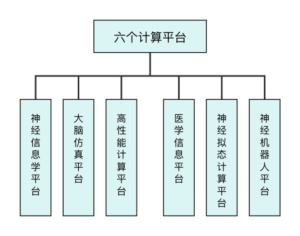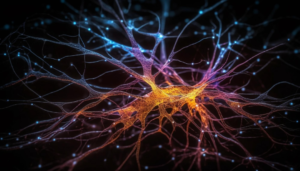In a landmark moment on April 14, 2003, the Human Genome Project (HGP) was declared essentially complete, taking a significant step in humanity’s quest to decipher the enigmatic script of our genetic makeup.
This monumental task was the culmination of a decade-long effort, a collaboration among scientific teams from numerous countries, marshaling vast resources of manpower, material, and finance. It addressed the daunting question: What exactly constitutes the human genome? If we liken scientific research to a journey of unraveling the unknown, where does ‘Jeanette’, a symbol of human ambition, set its course after the completion of the Human Genome Project?
The answer lay in a new frontier — the brain.
Perhaps the most enigmatic subject in biology, the brain has captivated scientists for ages. The human brain is estimated to contain nearly a hundred billion neurons, interconnected by close to a quadrillion synapses*. This vast neural universe within our skulls endows us with language, consciousness, and higher cognitive processes. Exploring the brain’s complexities is not merely an audacious scientific endeavor; it represents a quest to decipher what could be considered the ultimate ‘design’ by the Creator. Furthermore, deepening our understanding of the brain paves the way for groundbreaking developments in neuromorphic intelligence and tackling challenging neurological disorders—endeavors with profound implications.
*Note: The Milky Way Galaxy is estimated to contain between 100 to 400 billion stars, while the observable universe holds around 200 trillion stars, thus earning the brain its moniker, the ‘three-pound universe.’

Figure source: pixabay
There is now a global consensus on the significance of brain research. Nations worldwide have vigorously commenced a technological race to ‘decode the mysteries of the brain.’ A decade ago, in 2013, the Obama administration in the United States and the European Union each initiated their respective brain projects: BRAIN Initiative and Human Brain Project (HBP). Subsequently, Japan and several other countries also launched their own brain projects. Within this global context, the long-anticipated ‘China Brain Project’ officially commenced in 2021.
Thus, the era of neuroscience has arrived.
1. What are the key issues to be addressed?
While the core questions of brain projects around the world are similar — aiming to understand precisely how hundreds of billions of neurons and trillions of synapses in the human brain organize into functional neural circuits that enable us to fall in love, compose poetry, or solve mathematical problems — there are noticeable differences in the focus of each country’s brain project.
(1) The European Union: Simulating the Brain – A Fantasia of the ‘Brain in a Vat’
In 2013, the European Union funded two flagship projects to promote European industrial development: the HBP and Graphene Project. The HBP inherits the EU’s tradition of interdisciplinary collaboration in neuron-inspired computing and carries forward the ambitious goal of the ‘Swiss Blue Brain Project’ to ‘simulate the entire brain and establish a unified model.’
In essence, the primary goal of the HBP is to design and apply six computing platforms.

Figure source: Nextquestion Editorial department
This involves four sub-projects: research on the mouse brain, research on the human brain, development of experimental setups and methods for simulating behavioral cognitive processes and brain states, and the creation of brain models from the cellular to the network level, including detailed, simplified, and mass models.
(2) The United States: Neurotechnology – To do a good job, an artisan needs the best tools
The United States Brain Initiative, primarily driven by the development of neurotechnologies, is officially named ‘The Brain Research through Advancing Innovative Neurotechnologies’ (BRAIN). The initial aim of this program is to accelerate the development and application of innovative neurotechnologies. This involves constructing dynamic images of the rapid interactions between brain cells and complex neural circuits, across both time and space, with the ultimate goal of developing and using tools for a biological understanding of how the nervous system functions in health and disease.
The program has outlined seven priority areas for development:
- Identifying types of cells in the brain and developing tools to record, mark, and precisely manipulate defined neurons in the living brain;
- Creating a neural circuit map from synapses to the whole brain;
- Developing technologies to monitor neural activity, constructing dynamic images of brain functions;
- Developing precise and dynamic technologies to regulate neural circuit activity, establishing connections between brain activities and behavior;
- Developing new theoretical and data analysis tools to understand the biological basis of mental processes;
- Innovating technologies to understand the human brain and treat brain diseases;
- Integrating new technologies and conceptual methods to explore how dynamic patterns of neural activity translate into cognition, emotion, perception, and action in health and disease.
In 2022, BRAIN announced the advent of the ‘BRAIN 2.0’ era, marking a significant evolution in its objectives. The project’s objectives will further concentrate on three areas: establishing a comprehensive map of human brain cell types, constructing a complete micro-connection map of the mammalian brain, and developing tools to precisely target specific brain cells.
(3) China: Brain Diseases – Eradicating Suffering for the People
China Brain Project, though primarily focused on basic research, treats application not as a distant goal but as an equally important and immediate objective. Given China’s unique advantages in neuroscience research, such as a large patient population with brain function disorders and abundant primate research resources, focusing on brain diseases is a distinctive feature of the China Brain Project.
Specifically, the structure of the China Brain Project follows a ‘one body, two wings’ approach. The ‘one body’ refers to the main focus and core: elucidating the neural mechanisms underlying human cognition. The ‘two wings’ consist of research on major brain diseases and the advancement of brain-like research through artificial intelligence. The overarching goal is to achieve internationally leading results within the next 15 years in three cutting-edge fields: cognitive neuroscience, the diagnosis and treatment of brain diseases, and neuromorphic device.
2. The Leaders of the Global Brain Initiatives
(1) Henry Markram and His Scientific Heroism
Henry Markram, the former head of the European Union Brain Project, is an intriguing figure in the realm of neuroscience.
Christof Koch, the director of the Allen Institute for Brain Science, once described Markram as having two personas: ‘One is a brilliant, clear-headed scientist… The other is a public-relations-conscious savior.’
Born in 1962 in South Africa’s Kalahari Desert, Markram spent his formative years studying within the country. In 1991, he earned his PhD in neuroscience from the Weizmann Institute of Science, a premier research institution in Israel. During this time, Markram developed a passionate interest in studying ‘how the brain works,’ a curiosity that would later shape his career. As Koch noted, Markram is an outstanding scientist. His early research primarily focused on the chemical regulation of the brain. In this field, Markram achieved numerous milestones, notably developing the theory of spike-timing-dependent plasticity – the idea that the strength of neural connections changes based on the timing of pulse arrivals and departures.
He argued that neuroscientists must systematically compile their findings, utilizing computers to explicitly code models, such as the molecular structures of ion channels, and make them work in tandem. In 2005, Markram founded the Swiss Blue Brain Project with the aim of reconstructing and simulating the human brain at the cellular level. While the Blue Brain Project made significant strides, Markram’s ultimate goal remained to integrate data across the entire brain. In 2009, fate smiled upon him again. Markram’s visionary ideas for a brain project garnered funding from the European Union. This marked the prelude to the birth of the European Union Brain Project.
(2) The Musician Who Discovered the Huntington’s Disease Gene
Francis Collins, a key figure in the United States Brain Initiative, leads a life at the intersection of science and music.
Born in 1950 in Staunton, Virginia, USA, Collins enjoyed a carefree childhood on a farm. He imbibed cultural knowledge from his mother at home and played music with his father in his leisure time. After earning his bachelor’s degree from the University of Virginia in 1970, he pursued his master’s and doctorate at Yale University. In 1977, Collins obtained his Doctor of Medicine from the University of North Carolina at Chapel Hill. His academic achievements are numerous and notable. He originally invented the genetic technique known as “positional cloning,” which led to the identification of genes associated with several significant genetic diseases, including cystic fibrosis, neurofibromatosis, Huntington’s disease, and familial thyroid medullary carcinoma.
Subsequently, Collins was invited to succeed James Watson* as the second director of the National Human Genome Research Institute. In this role, he oversaw the successful completion of several objectives within the Genome Project. In 2013, President Obama appointed Collins, then the director of the National Institutes of Health (NIH), to oversee the implementation of the United States Brain Initiative.
*Note: James Watson, along with Francis Crick, deciphered the double helix structure of DNA and was one of the recipients of the 1962 Nobel Prize in Physiology or Medicine.
Beyond his identity as a scientist, Collins is also a passionate musician, an avid guitarist who often performed for staff and welfare associations during his tenure as the NIH director. His musical creations are frequently showcased on the NIH’s online platforms.
(3) Mu-ming Poo: A Transition from Physics to Neuroscience
China Brain Project is led by Academician Mu-ming Poo.
Born in 1948 in Nanjing, Jiangsu Province, China, Mu-ming Poostarted his academic journey in the Physics Department at Tsinghua University in Taiwan in 1966. Despite his background in physics, he harbored a profound interest in biology. In 1968, inspired by James Watson’s ‘The Double Helix’ and the revelation that biophysical method X-ray crystallography had solved one of biology’s most crucial problems—the mechanism of gene replication—P Poodecided to pivot towards biology. He joined the laboratory of distinguished biophysicist Richard Cone at Johns Hopkins University in the United States and earned his PhD in biophysics in 1974. His postdoctoral research at the Woods Hole Oceanographic Institution and the Department of Life Sciences at Purdue University in the U.S. marked his transition from physics to biology.
Mu-ming Poohas made significant discoveries in the areas of axonal guidance in neuron growth, establishment of neuronal polarity, formation and plasticity of synapses, and the function and plasticity of neural circuits. His work has greatly advanced the field of neurobiology in China. The Qiushi Science and Technology Foundation noted, ‘ Poo has invented and developed a series of new theoretical techniques in neurobiological research, created a response mechanism to guide molecules in nerve growth, and elucidated the cellular signal transduction mechanism in directional decision-making during nerve growth. Over the past 20 years, he has discovered that neurotrophic factors can regulate signal transmission between neurons and conducted quantitative analysis on the temporal information storage mechanism of neural signals. His work has made significant contributions to understanding the developmental mechanisms of neural circuits, how the brain stores long-term memories, and how to repair brain nerve damage.’

Caption: Main leaders of national brain projects, from left to right: Markram, Collins, Mu-ming Poo. Figure sources: Left – Wikipedia; Middle – Wikipedia; Right – SHANGHAI ASSOCIATION FOR SCIENCE AND TECHNOLOGY.
3.What Achievements Have Been Made?
(1) The European Union
According to its own summary, the European Union Brain Project describes its accomplishments as follows: ‘The project pioneered digital neuroscience, establishing a new approach to studying the brain based on multidisciplinary collaboration and high-performance computing. Over the years, the HBP, through its research infrastructure EBRAINS and new collaborative approaches in the field, aims to continue influencing neuroscience.’ Over the past ten years, the HBP has published over 3000 academic papers, developed more than 160 digital tools, and fostered medical and technological applications, along with the open research infrastructure EBRAINS and a transnational, interdisciplinary academic community.
EBRAINS, a significant achievement of the HBP, is an integrated digital platform that combines six foundational computational platforms targeted by the project. The establishment of EBRAINS enables researchers and clinical experts to access unified resources and services provided by the HBP, including results, tools, software, hardware architectures, and simulation environments.
Moreover, the HBP has accumulated important and useful scientific knowledge and technical applications. For example, it has mapped detailed anatomical-synaptic-functional atlases of at least 200 brain regions; completed a 3D map of 25,000 synapses in the human hippocampus; developed digital twin brain models for epilepsy research; and includes humanoid robotic hands for hazardous operations and the advanced human-brain-inspired computer SpiNNaker, among other developments.
(2) The United States
Mapping brain cell atlases is a crucial step in understanding how the brain functions in health and disease. Within the ‘Brain Initiative Cell Census Network (BICCN)’ project, 21 recently published papers have provided detailed insights into the intricate cellular diversity of both human and non-human primate brains. These studies identified similarities and differences in cell organization and gene regulation between human and non-human primate brains.
Regarding brain connectomes, the United States Brain Initiative’s research team has, for the first time, mapped all neural connections in the brain of a fruit fly larva.
In the field of neurotechnology, the United States Brain Initiative has also made several achievements. Introduced in 2018, a wearable magnetoencephalography (MEG) brain scanner allows researchers to track neural activity in real-time during everyday activities, such as drinking tea, typing, conversing with friends, or playing cricket. The Swept Confocally Aligned Planar Excitation (SCAPE) microscopy imaging system, capable of three-dimensional imaging of living tissues, is poised for use in clinical disease detection, surgical guidance, and transplant organ screening.
Furthermore, Ludovic Bellier and Robert Knight from the University of California, Berkeley, have used computer models to attempt the reconstruction of music based on the brain activity it elicits in listeners.
(3) China
As of now, the China Brain Project has been in operation for two years, with many significant projects underway. One notable endeavor is the ‘Whole-Brain Mesoscale Neural Connectome’ project, led by the CAS Center for Excellence in Brain Science and Intelligence Technology. This project aims to map gene expression and neuron types across the entire brains of zebrafish, mice, and non-human primates, thereby creating mesoscale structural and functional neural connectomes.
In July 2023, through a collaborative effort involving multiple domestic and international institutions, China utilized its self-developed Stereo-seq, an ultra-high precision, large field-of-view spatial transcriptomics technology, along with DNBelab C4 snRNA-seq, a high-throughput single-nucleus RNA sequencing technology. These were instrumental in creating the world’s first single-cell resolution spatial distribution atlas of macaque monkey cerebral cortex cells. This achievement has had a significant impact, showcasing the emerging prowess and contributions of the China Brain Project in neuroscience.

Figure source: freepik
4. The Future is Here
2023 marks the tenth year since the initiation of the European Union Brain Project. In August of this year, Nature magazine published a review on the ‘European Union Brain Project,’ acknowledging the scientific achievements it has brought to the world over the past decade. This includes achievements like mapping anatomical-synaptic-functional atlases for at least 200 brain regions and using supercomputers to simulate consciousness and memory processes, as previously mentioned. However, the report also candidly summarizes some of the project’s implementation mistakes, including overly ambitious research goals, chaotic funding distribution, and fragmented project collaboration.
The United States Brain Initiative continues to show strong momentum, having announced the advent of the ‘BRAIN 2.0’ era in 2022. China Brain Project, still in its relative infancy, is poised and ready to make significant advances.
Currently, the rapid development of artificial intelligence further propels the progress of human brain projects. Through research in machine learning and neural networks, scientists are gaining deeper insights into the workings and cognitive processes of the human brain. Artificial intelligence plays a crucial role in mimicking brain functions, especially in information processing, pattern recognition, and learning. This offers new perspectives on cognitive functions and neurological diseases. Additionally, AI is used in interpreting and analyzing neuroimaging data, helping scientists better understand brain activity and structure. The application of these technologies opens up broader and deeper exploration in brain science research, potentially accelerating our understanding of the brain’s mysteries.
Of course, there are skeptics who question the extent to which these brain project initiatives advance human knowledge, pondering whether the massive investment of resources is truly worth it. This skepticism echoes the doubt expressed in the narrative of ‘Frozen Kingdom,’ where the captain’s wife questions the value of Jeanette expedition: ‘Was it worth it? After enduring so many hardships, frustrations, and sacrifices, they only took a small step forward in humanity’s ultimate quest for the Arctic Grail. Was the knowledge gained worth the lives lost?’
Perhaps for every explorer in this field, the answer might be akin to the mountaineer’s creed: ‘Why set out? — Because the mountain is there.’